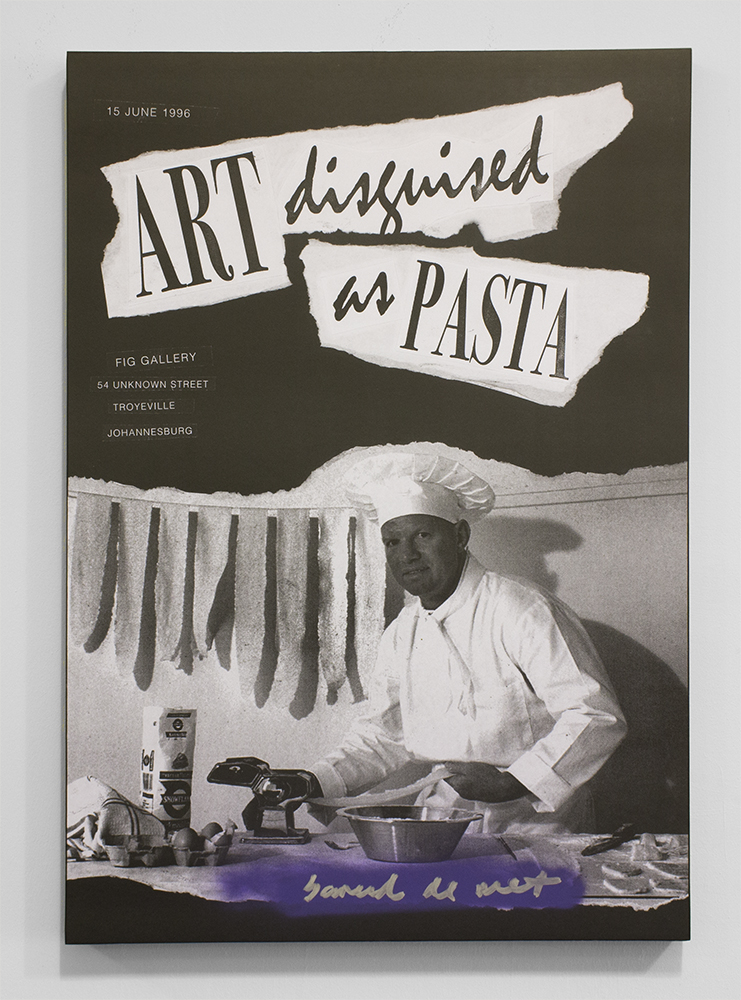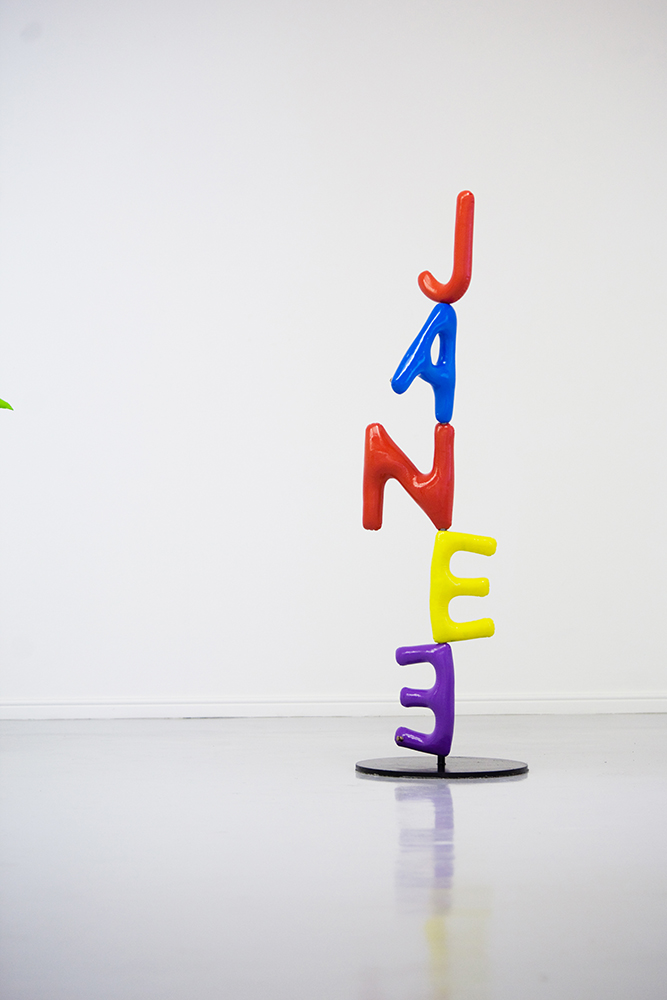
Barend de Wet was born in Boksburg in 1956, and towards his untimely death had long become an emblematic figure of the artist, the possibilities of the playfulness in the creative act and the ostensible freedoms of an artistic life within the city of Cape Town where he was based. De Wet’s oeuvre, straddling nearly forty years, encompasses traditional sculptural media mostly in metal work, performances involving nudism, craft skills and fanatical hobbyism, and wall-based ‘knittings’, gaudy coloured canvasses comically clothed in knitting, crochet and embroidery.
Winner of the Volkskas Atelier Award in 1990, De Wet dropped out of an architecture course at the University of the Witwatersrand, Johannesburg, to study Fine Art at the Michaelis School of Art, University of Cape Town, graduating in 1983. He held his first solo exhibition Toying with art at the Old Castle Brewery in Woodstock, Cape Town, in 1985. Two of his most iconic works were made in 1996, the first, Art disguised as pasta involved De Wet preparing, in an empty storefront in Troyville, Johannesburg, as hosted by FIG Gallery, fresh pasta hung out in lines whilst dressed in chef’s whites. The work comments on food preparation as having an innate sculptural component, whilst the transposition and decontextualisation of this activity from the kitchen becomes an artistic gesture of mock Art Povera in itself. The second work art is Life: homage to Michelangelo, Rodin, Camille Claudel and my wife was De Wet official resignation from the art world through the birth announcement of his son in the form of a photographic postcard depicting the new-born on a pedestal.
During 1998, along with artist Peet Pienaar with whom he frequently collaborated in the 1990s, he established the Museum of Temporary Art at his hotel, The Grand, in Observatory. Here he continued his obdurate battle against the intellectualisms of art, favouring honest gestures imbued with visual puns and Duchampian mischief. Before his return to commercial art galleries with three solo exhibitions at SMAC Gallery’s branches in Stellenbosch and Cape Town from 2010 onwards, De Wet followed various pursuits, including being a model for Issey Miyake and David West, a beekeeper, a Masters World record holder in yo-yoing, a serial tattooist and an innate exhibitionist.
Amongst several exhibitions his work was included in the 1994 São Paulo Biennale, Dada South? Exploring Dada Legacies in South African Art 1960s to the present co-curated by Kathryn Smith and Roger van Wyk at the IZIKO South African National Gallery in 2009, and the screening The Film Will Always Be You: South African Artists on Screen co-curated by Zoe Whitley and Abrie Fourie at Tate Modern, London, in 2015.
Often inhabiting the position of the ‘wise fool’, and continually reinventing his practice through generosity and surprise, De Wet, according to Kathryn Smith who penned his monograph in 2010, “operated with stunning agility in the interface between contemporary art, material culture and social networks. He is everywhere and nowhere at once”. His legacy is perhaps best articulated by Smith stating “throughout his career, De Wet has consistently opened up spaces for possibility for future creative action in a context of production with very specific local conditions.” [1]
 Art Disguised as Pasta (2016) Lithograph on Paper Image source
Art Disguised as Pasta (2016) Lithograph on Paper Image source
 janee (2010), painted bronze, 116cm Image source
janee (2010), painted bronze, 116cm Image source
Endnotes
[1] Kathryn Smith. 2010. Barend de Wet. SMAC Art Gallery. Stellenbosch. ↵